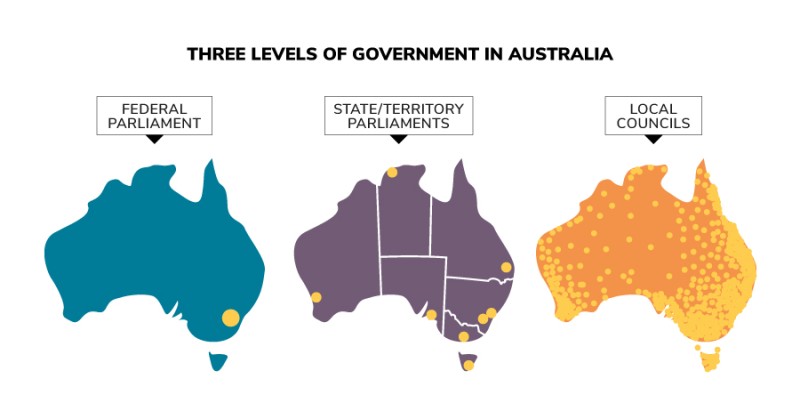If local councils aren’t mentioned in the Constitution, how are they allowed to exist and make laws?
Great question!
Some features of Australia’s system of government are not mentioned in the Australian Constitution but still operate within the law. Local councils are not mentioned in the Constitution, but they can exist and make laws because the Constitution gives state parliaments the power to make laws for their own states. That includes the power to create and manage local councils.
Each state has a local government Act that provides the rules for the creation and operation of councils. While these Acts vary across Australia, in general they cover how councils are elected and their power to make and enforce local laws, known as by-laws. A by-law is a form of delegated law, which means the state government gives (or delegates) councils the authority to make laws on specific local matters. As councils get their powers from state parliaments, council by-laws may be overruled by state laws.
When a feature of our system of government is not mentioned in the Australian Constitution, it does not necessarily make it illegal. For example, the Prime Minister is not mentioned in the Constitution, but the position exists through long-standing convention. While the Constitution is central to the way Australia’s system of government works, it does not contain every structure or role that is part of our system.
Three levels of government in Australia

Parliamentary Education Office (peo.gov.au)
Description
The three levels of government – the law-making bodies in Australia. The Federal Parliament is located in Canberra, the nation's capital. State/territory parliaments are located in the capital cities of each of the 6 states and 2 territories. Local councils are located around Australia in each local council division.
This work is licensed under a Creative Commons Attribution-NonCommercial-NoDerivs 3.0 Unported License.
You are free to share – to copy, distribute and transmit the work.
Attribution – you must attribute the work in the manner specified by the author or licensor (but not in any way that suggests that they endorse you or your use of the work).
Non-commercial – you may not use this work for commercial purposes.
No derivative works – you may not alter, transform, or build upon this work.
Waiver – any of the above conditions can be waived if you get permission from the copyright holder.
